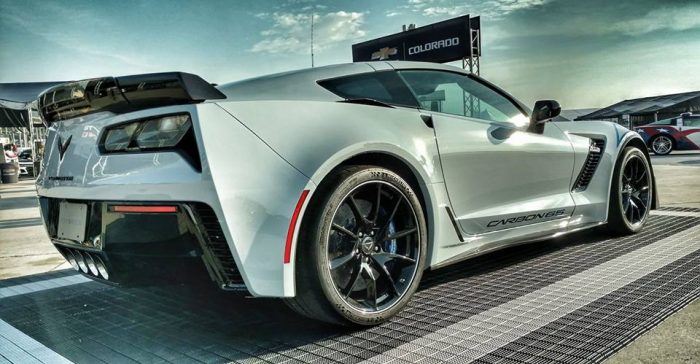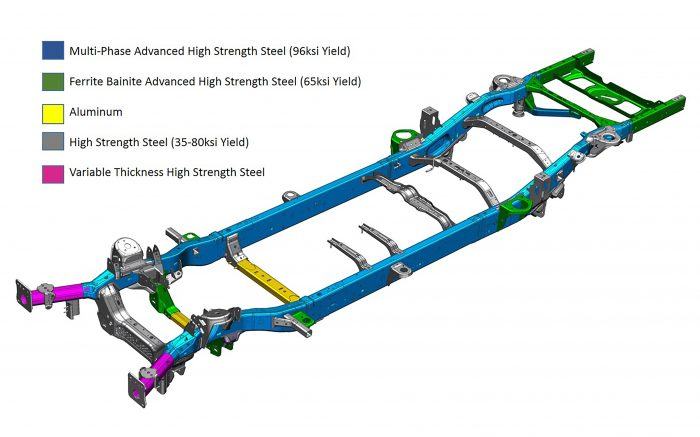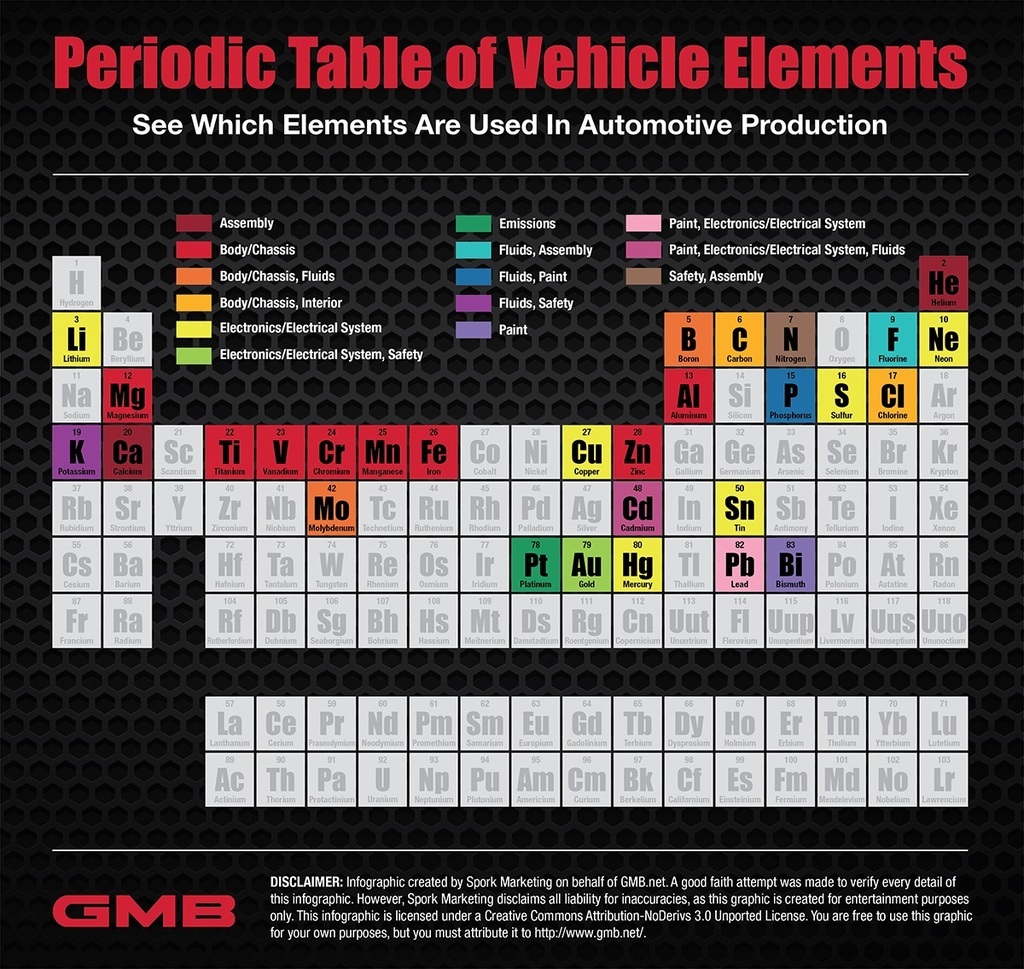Material composition always fascinates me as it relates to the automotive industry – “material composition” being the overly academic way to say “this vehicle is made from that.” There are some materials that show up regularly in automotive manufacturing, like high-strength steel and aluminum. These materials are like marquee movies at the theater in the sense they get billed first, and are often highlighted most in an automaker’s press and marketing releases.
Trucks & Tool Boxes
A good example is when Ford switched over to aluminum for the 2015 F-150, following suit a short time later with the Super Duty. Given the sales volume of the F-150, the quantity of aluminum needed to support production, and cross town rivals GM and Ram still running steel body trucks, it’s easy to see why aluminum received so much attention, even though other materials (like steel funny enough) are used for the F-150.
Chevrolet billed their Silverado in response as the truck made with “high-strength steel for high-strength dependability.” We’ve all seen the tool box commercials right? Given the Silverado is a big seller, and with marketing pushing steel in those commercials, it’s easy to see why steel (even though Silverado uses aluminum too) gets all the attention. Ram has stayed out of this battle but reveal their strategy for the forthcoming 2019 1500 was placing materials “not just where possible but where practical.”
The reality of material composition, as it relates to the modern automobile, is much more diverse and expansive than these two materials. Even though steel and aluminum are vital, the thing to remember is that a car is really just a collection of a lot of little parts.
“Every new vehicle has thousands of parts, from individual nuts and bolts to plastic trim and body panels,” explained Sarah Porter, Marketing Manager at GMB North America. “While a lot of these parts are made from the same groups of elements, there are some surprises.”
Table of Automotive Elements
GMB North America has created a periodic table of elements but highlighted it according to automotive manufacturing. GMB is one of largest global manufacturers of OEM and aftermarket auto parts. Since 1934, the company has produced universal joints, water pumps, tensioner and idler bearings, and numerous steering and suspension parts among others. GMB’s color-coded graphic shows how different elements are used during vehicle manufacturing.
“We thought it would be fun to show how various elements are used by the auto industry in a familiar format,” Porter said. “We tried to make our periodic table a good resource for a quick glance, so we chose to highlight some elements that are frequently used in vehicles.”
Gold Diggers & Carbon Fibers
Among the not so commonly known elements is helium, used for leak testing parts during assembly. Additionally, helium is often utilized in controlled atmosphere brazing, a manufacturing process for certain automotive components. Also on the unexpected list is chlorine for moldings, trim pieces, and underbody coatings. How about gold? Yes, gold. It’s common in the circuitry responsible for deploying airbags.
I know what you’re thinking. Don’t remove your steering wheel to go mining!
Another interesting one is the chemical element bismuth. The pearl pigment of bismuth oxychloride was used in automobile paint between 1998 and 2000. Today, free-cutting or free-machining steel – or steel that is easier to machine – contains bismuth, and is used for the fabrication of automotive parts.
A not so surprising one on GMB’s table is carbon fiber, a performance car signature. Take the Corvette’s special Carbon 65 edition for example. The package marries carbon fiber elements with a new Ceramic Matrix Gray exterior color and a blue top (if it’s a convertible). Carbon fiber treatments include the ground effects, hood section, spoiler, roof (coupe), or tonneau inserts (convertible).

2018 Chevrolet Corvette Carbon 65 Edition at the 101st Running of the Indianapolis 500, May 28th 2017. Photo: Carl Anthony for Automoblog.net.
New Appreciation
We have included GMB’s graphic below. A full-size, downloadable, and shareable one is available here. It’s a cool chart and makes for something fun to share with your friends and family. After looking over GMB’s periodic table for a few minutes, you will likely have a new appreciation for cars.
“We enjoyed the research and are interested to see how these and other elements will be adapted to more automotive innovation and ideas,” Porter added.
Carl Anthony is Managing Editor of Automoblog and resides in Detroit, Michigan. He studies mechanical engineering at Wayne State University, serves on the Board of Directors for the Ally Jolie Baldwin Foundation, and is a loyal Detroit Lions fan.
Cover Photo: Volvo Car USA, LLC.
from Automoblog.net http://ift.tt/2GmSTey


No comments:
Post a Comment